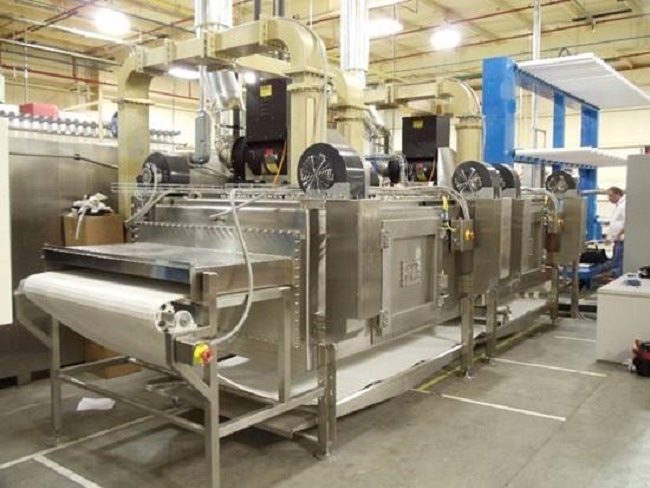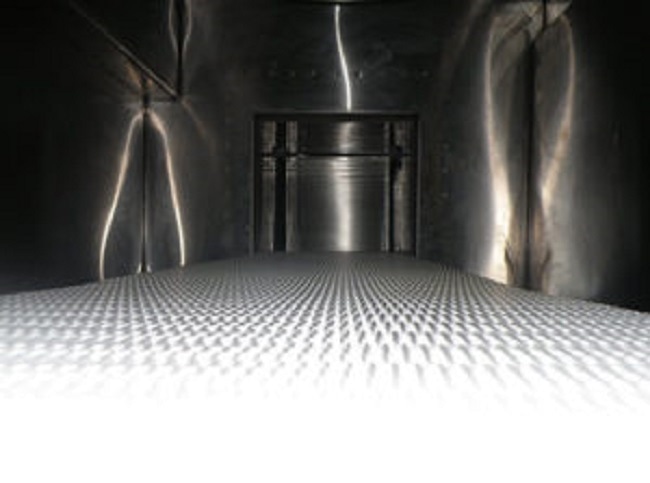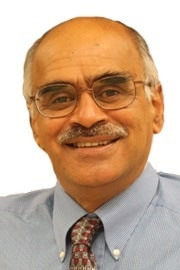 Interview conducted by Mychealla RiceNov 13 2017
Interview conducted by Mychealla RiceNov 13 2017Prasad Apte, Director of Technology, from Harper International, talks to AZoM about their microwave equipment that can help overcome the challenges of conventional heating.
How can microwave furnace technology be beneficial for advanced material processing on a commercial scale?
The two main features of microwave processing are that it is energy efficient and it is fast. Thus, even though microwave energy is expensive [maximum conversion efficiency ~80%] it can reduce the energy cost for thermal processing.
In some cases, the rapid heating also results in significantly improved properties [grain size, wear rates] and reduces contamination and damage to the material being processed.
It is critical, however, that the equipment be designed based on the properties of the material to be processed.
Please tell us a bit about Harper International’s furnace technologies and microwave heated systems?
Harper International is a well-recognized world leader in building thermochemical processing systems for making carbon fibre, battery materials, activated carbon, and other chemical, metal and ceramic products.
The new feature offered by Harper through its collaboration with Ferrite Microwave Technologies LLC (FMT) is processing systems based on microwave energy for heating.
Harper International can design and build continuous or batch processing systems for drying ceramic powders and shaped components, for chemical reactions and for sintering of ceramics, composites and even some metals.
In all cases Harper will collaborate with potential customers to understand the properties of the material being processed, test the efficacy of microwave heating, confirm the quality of the product and then design apparatus which will enable production at the desired throughput and clearly illustrate the cost, efficiency and property benefits of the microwave system.

What are the challenges of microwave heating? Are there misconceptions? How can Harper International’s range help overcome these challenges?
The biggest challenge in using microwave energy for heating materials is that some materials have dielectric properties such that they will not absorb microwave energy at room temperature.
Dielectric properties change as a function of temperature so materials could react with microwave energy at elevated temperatures. The challenge is to heat up the materials to that temperature.
Harper will recommend use of powder bed techniques to initiate heating at room temperature.
One common misconception is that microwave energy is uniformly distributed in a processing chamber. This is not true. In fact, microwave energy distribution is very non-uniform.
Even in a household microwave oven there are regions of high energy concentration which can give non-uniform heating.
FMT has developed several techniques to modify the input of microwave energy to the processing chamber to dramatically reduce the energy difference between the high and low energy regions.
One consequence of non-uniform energy distribution is that some parts of the load material could get hotter than other parts. If that happens, one can get ‘Thermal Runaway’ where the hot region gets hotter in an uncontrolled way.
Harper’s designs will provide uniform energy distribution to avoid thermal runaway.
Finally, accurate measurement of temperature is difficult and expensive. Harper/FMT can supply the necessary devices for measurement but we also recommend that the process controls be developed using power and time as variables.
Once these parameters are optimized to yield the desired product they can be reliably used for control since the ‘load’ is the heating element.

How can Harper International help you decide if your advanced material is suitable for microwave systems?
Harper firmly believes that an industrial microwave system should be purchased only after testing to ensure that risks are reduced and the equipment is designed for the specific material.
The first thing to do is to check the dielectric constant and the dielectric loss tangent for the material [if the data is available]. This will provide some indication of the behaviour of the material at room temperature.
However, the best way to determine if the advanced material is suitable for a microwave powered system is to actually try and heat the material in a microwave apparatus.
For some materials, a simple domestic microwave oven can provide the answer. If the material does not couple directly with microwave energy at room temperature, there are ways to get around the problem. Harper’s engineers along with those from FMT can modify the equipment set up to enable heating.
The form in which the material is to be processed is also critical to the coupling. Thus, powders will behave differently from agglomerates and hence the trials should be conducted with the material in the desired format.
Which applications will benefit from the range? How? Are the furnace technologies and microwave systems a solution?
Drying of ceramic powders will benefit greatly from microwave processing. When ceramic materials are dried, the outer regions of the powder bed dry readily.
However, once dry these layers act as insulators preventing heat from reaching the central regions of the powder bed. Microwaves will penetrate deep in the powder beds, couple directly with water and dry the bed readily.
Some ceramic materials have shapes or microstructural features which can be damaged during conventional processing, due to attrition. In microwave drying those features are not damaged.
In general, most processes which require electrical heating could benefit from microwave processing.
What are the benefits of microwave heating?
The main benefits of microwave heating are:
- Energy efficient - saves energy because only the product is heated
- Rapid processing - load heated directly
- This means that in principle cycle times and energy requirements for thermal processing are drastically reduced.
Secondary benefits include the following:
- Flexibility – ability to process in different environments
- Material Purity – product contamination can be dramatically reduced
- Increased Volumetric Utilization – avoids limitations of thermal conductivity, shadowing, convective heat transfer
- Smaller Footprint – little or no cooling or insulation required for the equipment
- Control over Moisture Content – coupling with water is very effective
- Volumetric Heating – Little or no gradient from the outside to interior of the body being heated when properly designed.
Where can our readers go to find out more?
Recently, Harper International has presented papers at industry conferences. These are available on the Harper website. Similarly, the FMT website also has a lot of information on microwave processing.
About Prasad Apte
Prasad obtained his undergraduate degree in Metallurgical engineering from the Indian Institute of Technology, Bombay and a PhD in Metallurgy from McMaster University in Hamilton, Ontario, Canada.
He has worked in the field of Research and development for materials processing for the last 35 years in Canada and the USA.

He has been with Harper International for the last four years. His group includes several scientists and engineers focused on developing processes and equipment for high temperature thermochemical processing of materials.
Prasad has developed and commercialized microwave based processes for two very different industrial applications. He holds 6 patents on microwave processing.
Disclaimer: The views expressed here are those of the interviewee and do not necessarily represent the views of AZoM.com Limited (T/A) AZoNetwork, the owner and operator of this website. This disclaimer forms part of the Terms and Conditions of use of this website.